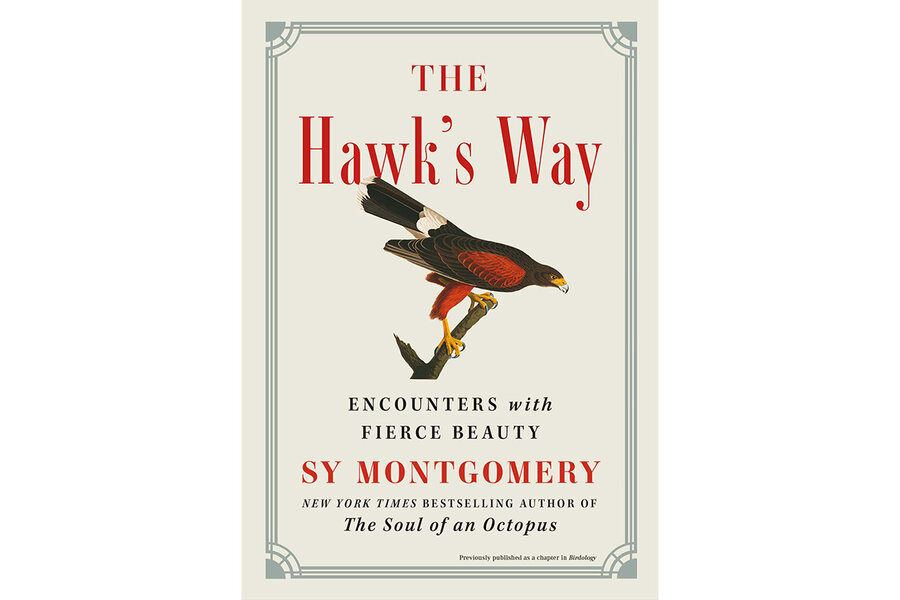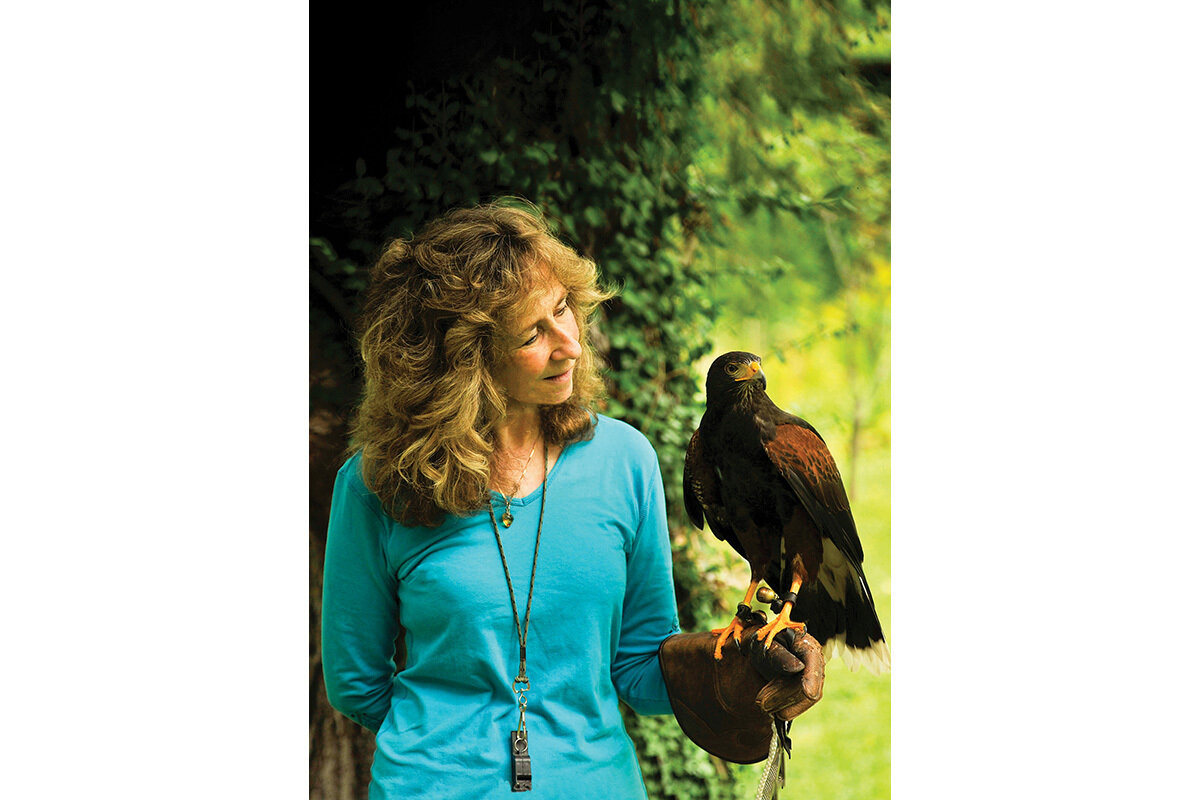Doing what comes naturally: The elegance and danger of hawks
Loading...
Bestselling author Sy Montgomery’s slim new book, “The Hawk’s Way: Encounters with Fierce Beauty,” began life as a chapter in the author’s 2010 book “Birdology.” It’s presented here by Atria Books as an elegant little illustrated booklet on its own. Montgomery, whose 2010 book “The Soul of an Octopus” made her a favorite of animal-book readers, turns her formidable descriptive passion to hawks, and to the world of falconry.
The starting point of the book is Montgomery’s tutelage by experienced New Hampshire falconer Nancy Cowan, who died at the beginning of 2022 (the book is dedicated to her memory). From Cowan, Montgomery learned the strange terminology of falconry – jonking, feaking, mantling, and so on – and was introduced to some of the world’s 300 species of avian daytime predators, the hawks, eagles, falcons, harriers, kites, and so on she refers to as “the tigers of the air.”
Hawks are pure predators, carnivores who live for hunting, and their skills at finding, flushing, and killing their prey has made them prized hunting partners for humans in many cultures for millennia (as Montgomery points out, the humans are very much the junior partners in the arrangement). For our author, they represent an icy kind of beauty, “pure savagery bereft of evil.”
Montgomery, a long-time vegetarian, keeper of chickens, and a hunter's daughter who foregoes hunting herself, immediately sees the irony. That she, of all people, would enter the world of falconry, where the humans involved use a combination of hunting dogs and falcons to find and kill prey, appears to be a contradiction. She's aware that falconry might well consume her life and her family (not to mention, quite literally, her chickens), but she feels a passionate pull towards the subject.
She’s also drawn to the awesome, forbidding nature of the birds themselves, as she watches Cowan’s Harris’ hawks, meets other birds, and learns their ways. Hawks, she realizes, aren’t in any sense pets. They don’t want to be touched, even if their human handler has raised them from a hatchling, and they can be incredibly intolerant of mistakes or discourtesies. “A hawk will not come to your rescue if you’re in trouble,” Montgomery writes with only a touch of sarcasm. “A hawk will not comfort you when you are sad.”
As usual in anything by this author, there are many digressions about the often ineffable, alien quality of the intelligences she’s encountering. One of the most memorable strands running through “The Soul of an Octopus” was the description of how strange and equal cephalopods are alongside humans, and the same thing happens repeatedly in “The Hawk’s Way.” “Birds are wild in a way that we don’t experience in our relationships with our fellow mammals,” Montgomery writes. “And nothing, I found, brings one closer to the pure wildness of birds than working with a hawk.”
Of course, you can’t work with hunting birds without engaging in hunting. Readers who share Montgomery’s original empathy and compassion for animals might want to proceed cautiously. The protracted, dramatic set-piece that serves as the book’s climax is Montgomery’s evocative description of a field hunt, which includes “launching” of captive quails as prey for the hawks. “There is nothing more innocent and appealing than a quail, with its rounded profile and soft brown plumage and black button eyes,” she writes. “In their pet carrier, the two birds are still as stones, their stillness a fervent prayer that we somehow won’t see them.” Montgomery watches as quails are flung into the air. One of Montgomery’s fundamental points is that anybody who decides to enter the world of falconry must be prepared for this kind of cruelty, but it’s still tough to read.
Fortunately, there’s plenty of compensation. The book breathes with glorious prose and challenging insights into a very strange world. In “The Hawk’s Way,” Sy Montgomery and her publisher have crafted a sharp little gem of a book, something fit to stand with classics like T.H. White’s “The Goshawk” or Helen Macdonald’s “H is for Hawk.” The next time any reader catches a glimpse of a hawk soaring over a field or highway, they’ll think of this little book and feel an extra shiver of wonder.









